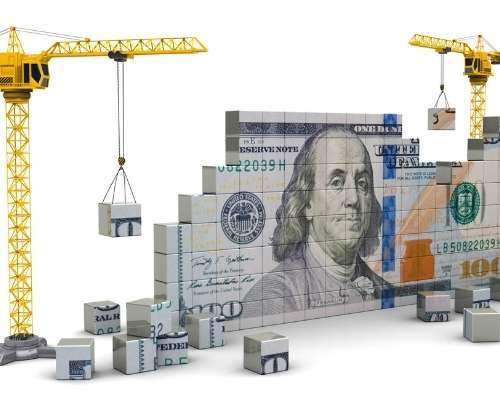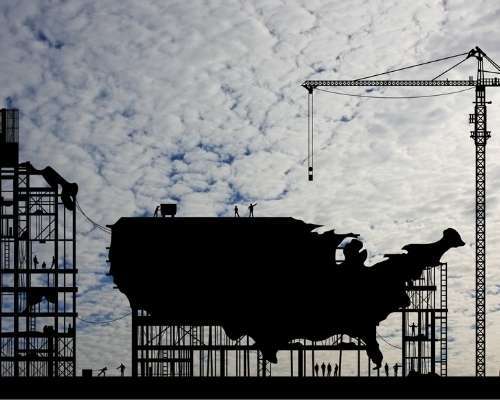5 Minute Read
December 9, 2020
0%

This month, Viewpoint has been examining metrics and trends about how the construction industry will recover from the COVID pandemic, and how business — and construction operations — will continue to change in the ‘new’ normal as we look ahead to 2021.
These topics were discussed in a special two-part webinar discussion within the ongoing ‘Oh Shift’ webinar series. In part 1, “Outlook for 2021 Part 1 — Chasing the Work,” we highlighted some of the top trends they see on the horizon for 2021, with a focus on how to best position yourself to chase and win work. In Part 2, “Outlook for 2021 Part 2 — Working Smarter in the New Year,” AGC's chief economist Ken Simonsen discussed the Coronavirus impacts and implications for the U.S. construction market, looking at top 2020 metrics and the construction trends they pointed to. Here’s a recap of some of those trends, and what they might mean for the year ahead:

AGC conducted a survey in October, 2020 and received over 1,000 responses to top-line questions that examined how contractors have been faring since COVID-19 hit last March.
More than 75% of respondents in October said that a scheduled project was canceled, which compared to 60% in August and 32% in June. Conversely, only 23% said they had won an additional project or project add-on, which compared to 21% in June.
78% of respondents said they are currently experiencing a project delay or disruption, which compared to 57% in June. 42% said this was due to a shortage of construction materials, equipment or parts (vs. 25% in June), and 35% said it was due to a shortage of craftworkers or subcontractors, which was unchanged from June. Luckily, only 7% of respondents attributed delays to being able to source PPE equipment, which was the leading cause of delays back in the spring.

The first Friday of each month, the Bureau of Labor & Statistics reports on national employment and labor metrics that pertain to the construction industry and the general economy, broken out by residential construction, nonresidential construction, and non farm labor.
In March, all three groups dropped by 1%, which was a fairly steep drop since February showcased the highest rate of construction employment since 2006. There was an even more precipitous construction employment drop in April, but then in May, construction had a big bounce back, which was in line with the broader economy.
There were two reasons for the employment bounce back seen in late spring: a lot of projects had been halted by government order or by the owner, which were rescinded by April; contractors were quick to apply for and received the payroll protection program (PPP) allowance that became available in April. 80% of respondents said they quickly put those loans to work so they could recall workers who had been furloughed in the spring. Since then, employment has been increasing, but it is still below pre-COVID levels seen in February.
Note: Check out our related blog on 2020 construction employment benchmarks.

The Bureau of Labor and Statistics also puts out the state employment report two weeks after the national report mentioned above.
By October, ¾ of states had still not gotten back to their February level of employment, which is seasonally adjusted. This means that construction employment is still in a bit of a hole, but there are huge differences when you compare state to state.
South Dakota has consistently stayed above where it was with 9.4% higher employment in October as compared to February. At the other extreme, Vermont has been at the bottom of the league standings with employment down 21.8% as compared to February. Other states at the bottom include North Dakota (-13.2%), Massachusetts (-10.5%), New York (-9.7%) and New Jersey (-9.1%).

Construction spending reports come out from the Census Bureau on the first business day of each month, which can be indicative of the overall health of the construction industry.
Total construction spending October vs. February is about flat, but there are big differences between industry verticals. Private residential is up by 7% in both single family and multi-family. Private nonresidential is down -6% and public construction is down -2%. The Census Bureau measures spending on projects that are already underway, which is why multi-family looks like it’s up more than single family, which is likely not the case as people increasingly move towards single family housing.
Construction spending by vertical varies widely with lodging (-17%), power (-11%) and highway and street (-11%) down the most. Lodging is taking a hit due to the lack of travel, and power (which is largely oil and gas) will likely continue to decline as more investments turn to onshore and offshore wind, solar, battery storage and vehicle charging.

The producer price index reflects price changes in goods and services from April to October. According to the index, the costs of all of the goods and services used in residential construction jumped by 10%. The index for new non-residential construction increased by 6% so 1-1.5% a month for a 6 month period, which is a very elevated rate of inflation.
On the other side, you have a bid price index, which reflects what contractors would charge to put up a particular building and what their overhead would be, in addition to profits, which reflects the ‘bid price.’ This has been flat for the past six months even though costs have been going up at an alarming rate. This is putting quite a squeeze on contractors, particularly at a time when there are less and less projects to bid on, which will likely be the story for quite a while.
Check out our recent blog on the uncertainty of construction material costs and availability.

Population growth will also continue to impact construction as it aligns with greater development trends.
In 2019, 10 states lost population, and the northeast and mid-section of the country experienced slow population growth, which is measured by the difference between births and deaths.
Larger growth occurred in the southeast, Texas, Colorado and Washington, and the largest growth of all was in Idaho, closely followed by Nevada, Utah and Arizona. Those four states along with Texas, Washington and Colorado have been among the fastest growing for several years in a row.
These are just a handful of key construction metrics and trends takeaways from the webinar. Watch the full on-demand recording here:
5 Minute Read
December 9, 2020
3 Minute Read
November 16, 2020
4 Minute Read
September 17, 2020